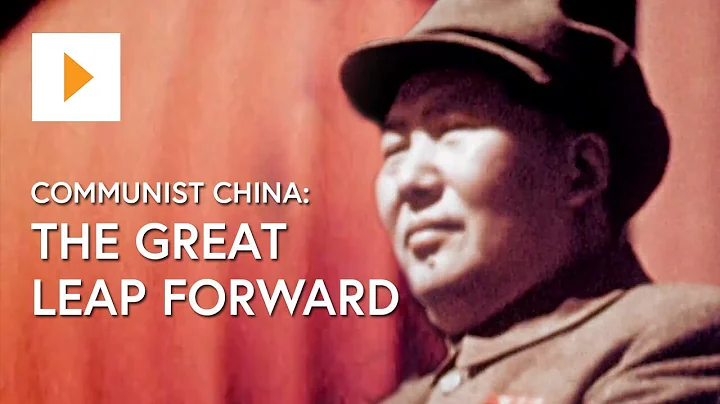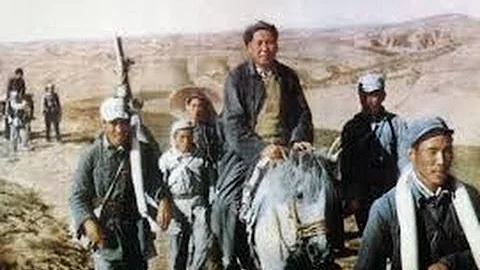
The book "Red Stars Shining on China" by American journalist Edgar Snow is well-known in the history of Mao Zedong's image dissemination. But what was the image of Mao Zedong before the book was published? On December 5th, Professor Ishikawa Makoto from the Institute of Humanities, Kyoto University, Japan, who authored the "History of the Founding of the Communist Party of China", was a guest at the Simian Institute for Advanced Humanities, East China Normal University. He introduced overseas reports on the Chinese Revolution in the 1930s "The image of Mao Zedong before "Red Star Shines on China".

In the English version of "Red Stars Shining on China", Snow used Mao Zedong's somewhat rustic photo.
Snow took two photos when he was interviewing Mao Zedong in Yan'an, and they are now widely circulated, one is foreign and the other is rustic. Snow used the rustic photo when he published "Red Stars Shining on China", which was first published in the UK in 1937, and later there was an American edition in 1938 and a revised edition in 1968. Now these three editions of "Red Stars Illuminate China" all use this picture to describe Mao's image. The photo of Mao Zedong wearing an octagonal hat has never been used in Snow's own writings.

This photo of Mao Zedong wearing an octagonal hat was first published in the American "Life" pictorial in January 1937.
This looking Western-looking photo of Mao Zedong was first published in the American "Life" (LIFE) pictorial in January 1937, and it was reprinted by many publications at that time. Some people may ask, why did Snow choose this picture for the "Life" pictorial?
Ishikawa Zhenhao guessed for two reasons: First, copyright. Western media have stricter copyright requirements. Snow sells to "Life" pictorial and will not use photos that have already been published in the work. Second, the simple impression of Mao Zedong is more in line with Snow's aesthetics and values. When he interviewed Mao Zedong, when Mao talked about his first half of his life, he suddenly untied his belt and talked about the first half of his life while grabbing lice. This left a deep impression on Snow. Snow liked Mao Zedong's natural and simple gesture very much.
Because of "Red Stars Shining on China", the world began to know who Mao Zedong was and who the leader of the Chinese Communist Party was. People learned about Mao Zedong and the first half of the Chinese revolution through this book. Then, before Snow went to Yan'an for an interview in 1936, what impression did the outside world have of Mao Zedong?
In an archive in Moscow, there is a file about Mao Zedong recorded in 1935. This file was filled out by someone else and the content is Mao Zedong in the personal file of the "Communist International". "Name: Mao Zedong Current Occupation: Member of the Political Bureau of the CPC Central Committee Birthplace: Chinese Year of Birth: Blank Class: Little Landlord Joined the Party: 1921 Education Level: Higher Normal School Parents: Little Landlord Experience: Central Committee Member since the First One ), served as the director of the Guangdong Peasant Movement Training Institute.” This file is very simple. It can be seen that the impression of Mao in the international community in 1935 was still very unfamiliar.

In August 1937, the photo of "Mao Zedong" was published in the publication "Weekly" issued by the Cabinet Printing Bureau of Japan.
Before 1937, Japan had no clear concept of Mao Zedong, the leader of the Chinese Communist Party. In August 1937, in the publication "Weekly News" published by the Cabinet Printing Bureau of Japan, a manuscript of the "Tanshina Communist Army" by the Ministry of Foreign Affairs of Japan was published, which used a photo that had nothing to do with Mao Zedong. A picture of Mao Zedong. The main content of "Tanshina Communist Army" is to analyze the situation of the Chinese Red Army before 1937, which is equivalent to the CCP study of the Japanese diplomatic authorities. "At the time, Japan thought it knew the Chinese Red Army best, but in this article, Mao Zedong, Chairman of the Central Government of the Chinese Soviet Republic, was a fat man." Said Ishikawa.
But in fact, before the "Weekly" published "Tan China Communist Party" in August 1937, other media published photos of Mao Zedong, and the image was much better. For example, the revolutionary pamphlet of 1934 in France published "Revolutionary China Today", which included a photo of Mao Zedong; in the same year, Moscow also had a pamphlet "Soviet China", and the photos of Mao Zedong in the two pamphlets were almost identical. . Where does
come from? Photo from 1927 3A group photo of the members of the Third Plenary Session of the Second National Party Central Committee in Wuhan. Ishikawa Zhenhao said that 1927 was a period of cooperation between the Kuomintang and the Communist Party. However, in that photo, Mao Zedong's position is not obvious, with an important Kuomintang sitting in front of him. After this photo was introduced to the Soviet Union, which supported the cooperation between the KMT and the Communist Party, some people analyzed that it was Mao Zedong. Thus, this image of Mao Zedong was published in the journal. In the Soviet Union at that time, apart from pamphlets, there was also a biography of Mao Zedong. For example, the Soviet Union's international current affairs review periodical "Foreign" in November 1934 published the earliest personal biography of Mao Zedong "Mao Zedong's Biography", the author was a Russian scholar Ellenborg. In this biography, Mao Zedong is described as the great leader of the peasant movement: "Mao Zedong is among the peasants, and he stands at the center of the struggle together with the peasants." It can be seen that the Soviet Union made a very high evaluation of the peasant movement at that time. The biography of
also quoted the original text from Mao Zedong’s "Hunan Peasant Movement Investigation Report": “Revolution is not a dinner party, a essay, or painting and embroidery.” However, this Russian scholar also believes that Mao is a sickly revolutionary and a poor man. "Despite poor health, Mao Zedong is still the leader of the Committee of the Former Enemy."
can see that starting from this group photo in 1927, whether it is a brochure introducing the Chinese revolution or Mao Zedong's biography, Mao Zedong's image is not a fat man. So, what happened to this wrong picture of the fat man by the Intelligence Department of the Ministry of Foreign Affairs of Japan?
I would like to mention the Japanese scholar Hatano Koichi. After 1935, he served as a special adviser to the Intelligence Department of the Ministry of Foreign Affairs and was the only authority in the Japanese authorities to study the history of the Chinese Communist Party. In June 1936, he published an article "The "Red Leopard" Mao Zedong" in the Japanese "World Knowledge" magazine, in which he mentioned that he had seen two photos of Mao Zedong. "As for his photos, two years ago (1934) I saw a thin face with very high cheekbones, but recently I have seen a round face, which is not like a patient with lung disease. It really feels like a different person. It’s astonishing as a company manager.” The photo Hatano Koichi provided to the Weekly in 1937 was the so-called “Fat and round, almost like a company manager”.
"Kiichi Hatano has his own database, which includes both thin photos of Mao Zedong in 1927 and fat photos of unknown origin. He should have witnessed Mao Zedong wearing an octagonal hat when he contributed to the Intelligence Bureau’s weekly newspaper. It’s a handsome photo.” But for some reason, Hatano Kichiichi gave the wrong photo to the magazine.
Ishikawa Zhenhao concluded that the Japanese authorities used photos that have nothing to do with Mao Zedong (a fat man). There are two possibilities: "First, if you really think Mao Zedong is a fat man, you can say that the Japanese war of aggression against China did not do so. To'know yourself and the enemy'; second, if it is to create a negative image of the CCP and deliberately mislead the public opinion, it reflects the Japanese government’s policy of fooling the people.” Ishikawa said, “This gives us the experience that we really understand now Is the actual situation in neighboring countries? Do Japan and China know each other enough?"
As for who is this fat guy? At present, Ishikawa Zhenhao has not provided a clear answer.
Source: The Paper





















